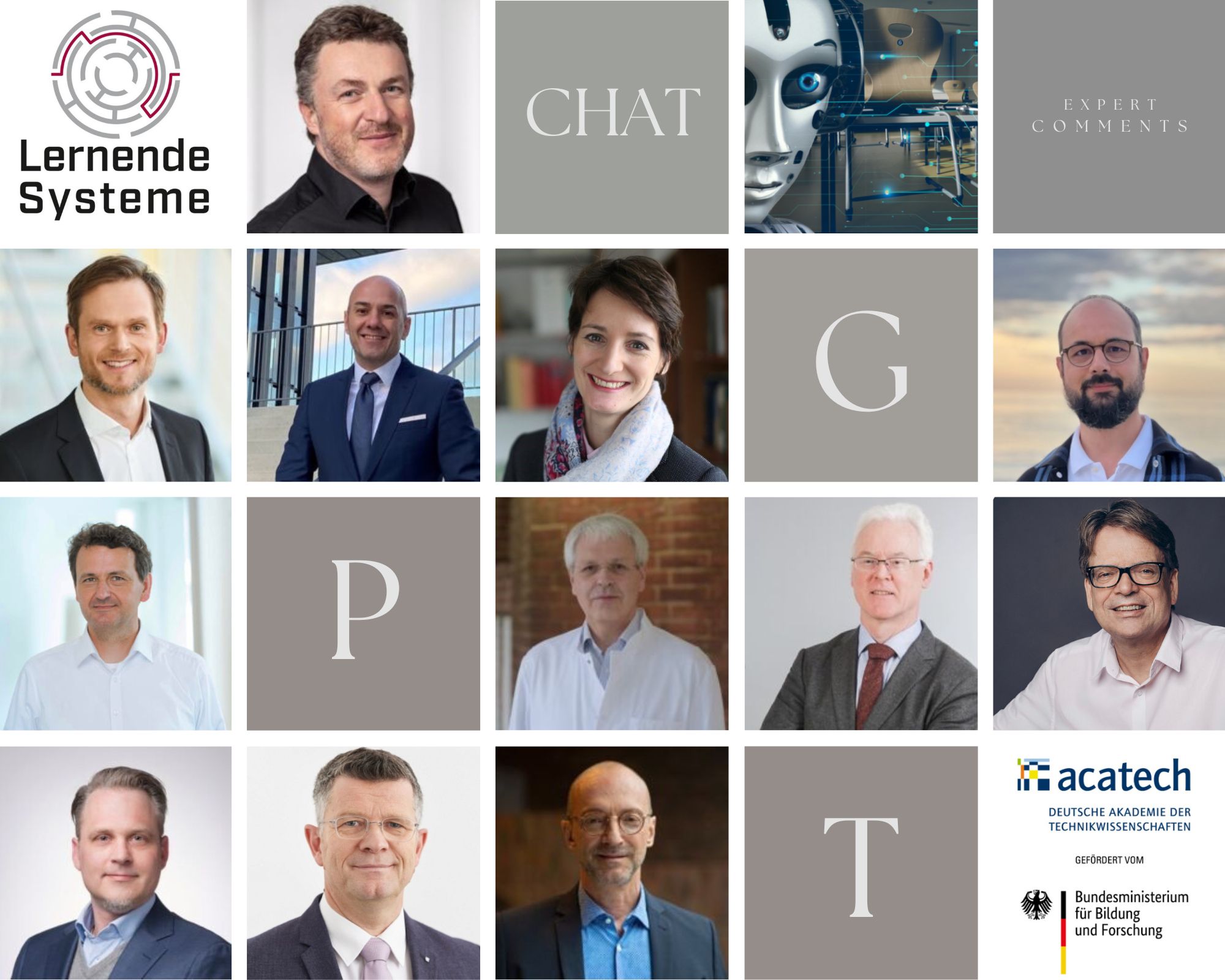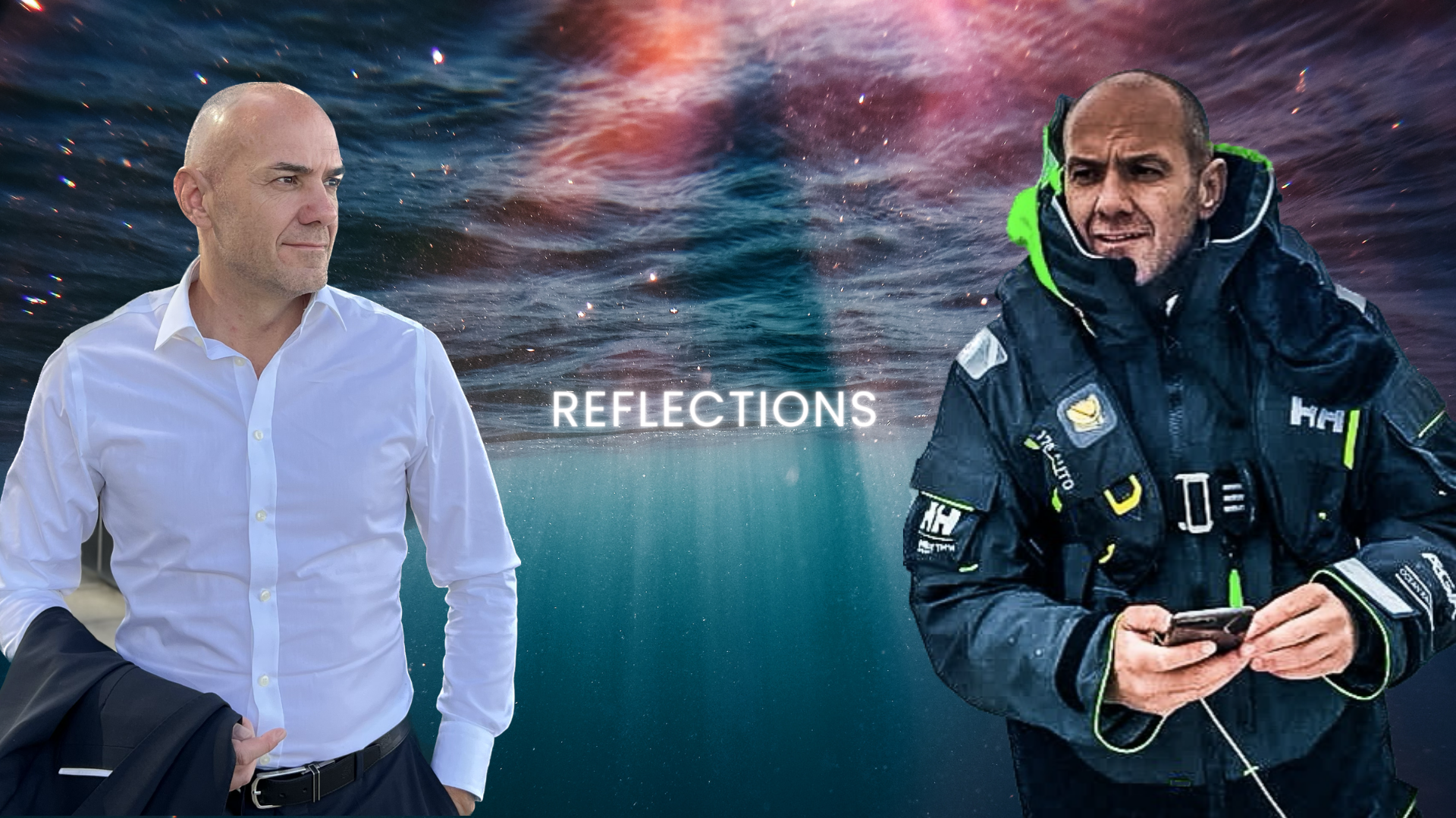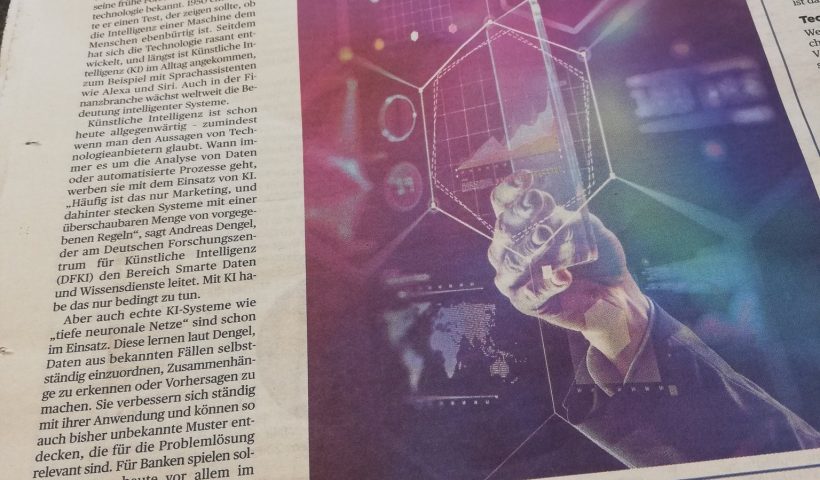The German AI platform Learning Systems has created an excellent platform for the exchange of innovation experts and thought leaders, and it is my honour and pleasure to be part of this initiative. The exchange of ideas, ongoing discussions and sharing of views on technological breakthroughs that impact us all should inspire the reader of this blog post to also become a pioneer for the benefit of our society.
You will find comments from the following members of the platform: Prof.Dr. Volker Tresp, Prof.Dr. Anne Lauber-Rönsberg, Prof.Dr. Christoph Neuberger, Prof.Dr. Peter Dabrock, Prof.Dr.-Ing. Alexander Löser, Dr. Johannes Hoffart, Prof.Dr. Kristian Kersting, Prof.Dr.Prof.h.c. Andreas Dengel, Prof.Dr. Wolfgang Nejdl, Dr.-Ing. Matthias Peissner, Prof.Dr. Klemens Budde, Jochen Werne
SOURCE: Designing self-learning systems for the benefit of society is the goal pursued by the Plattform Lernende Systeme which was launched by the Federal Ministry of Education and Research (BMBF) in 2017 at the suggestion of acatech. The members of the platform are organized into working groups and a steering committee which consolidate the current state of knowledge about self-learning systems and Artificial Intelligence.
EXPERT COMMENTS: How disruptive are ChatGPT & Co.
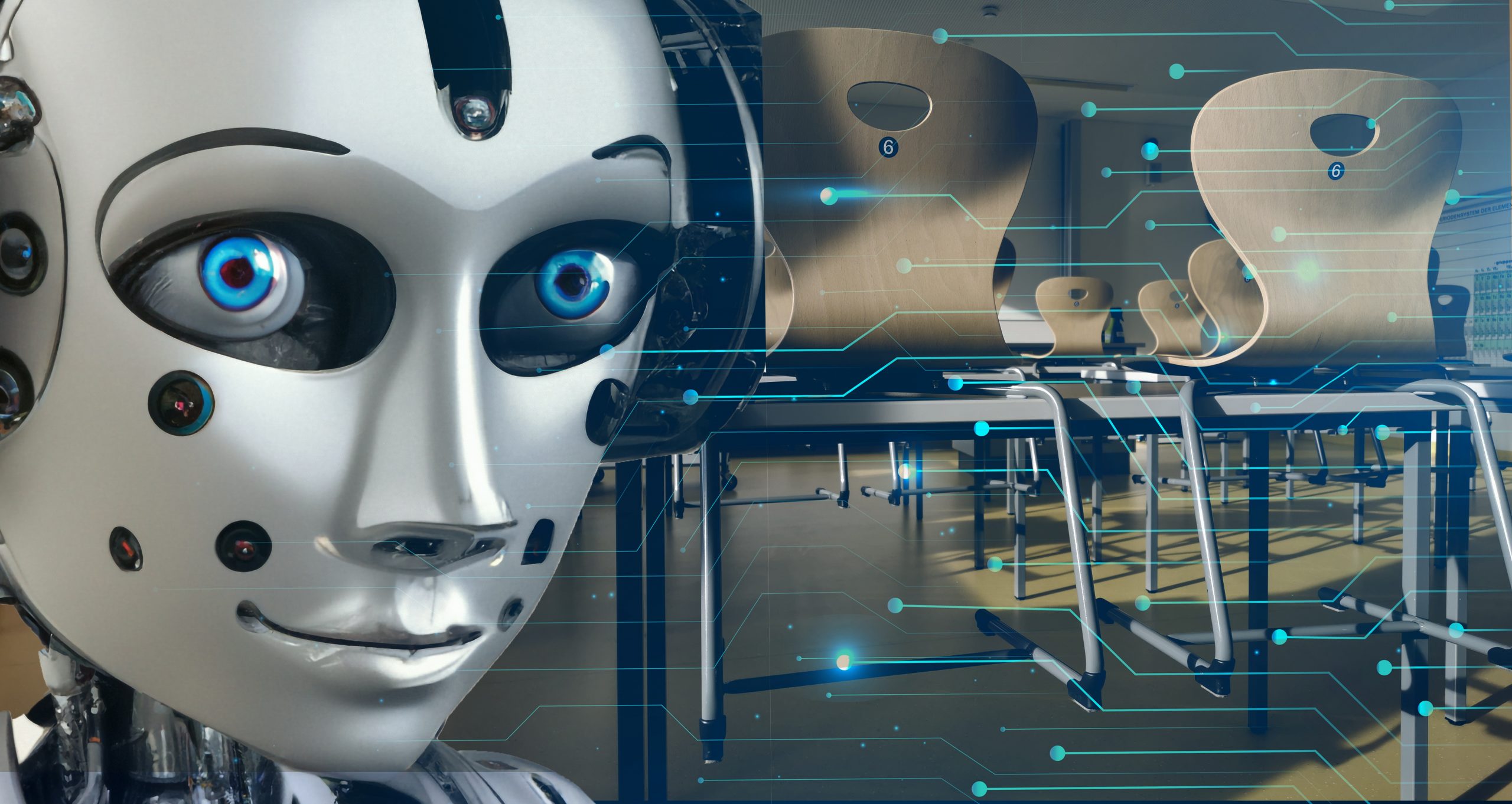
10 February 2022 – Source: Plattform Lernende Systeme, Translated with German AI-platform: DeepL, Original Source in German can be found HERE
The ChatGPT language model has catapulted artificial intelligence into the middle of society. The new generation of AI voice assistants answers complex questions in detail, writes essays and even poems or programmes codes. It is being hailed as a breakthrough in AI development. Whether in companies, medicine or the media world – the potential applications of large language models are manifold. What is there to the hype? How will big language models like ChatGPT change our lives? And what ethical, legal and social challenges are associated with their use? Experts from the Learning Systems Platform put it in perspective.
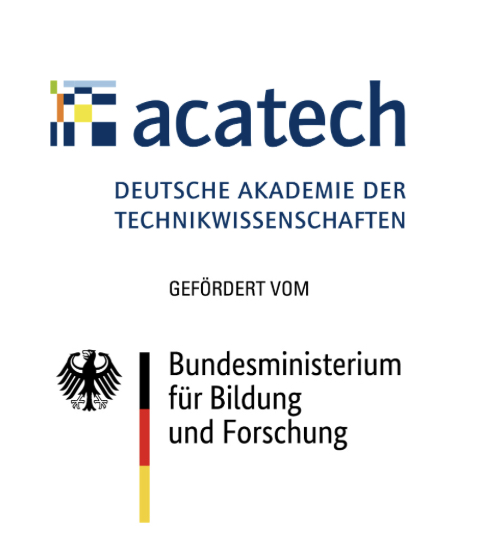
Digital assistants are becoming a reality.
“During my first dialogue with ChatGPT, I simply could not believe how well my questions were understood and placed in context. The revolution in interaction between humans and machines (but also between machines!) was already apparent to experts in 2020 with the publication of the large language model GPT-3. Now it is visible to everyone. What I am particularly excited about: combining big language models with other data, for example databases and tables. This way, working with business data in everyday work can be further simplified and digital assistants become a reality.”
Dr. Johannes Hoffart
Exploiting potential responsibly.
“Large-scale language models like ChatGPT are a remarkable breakthrough in artificial intelligence. They are not only changing the way we interact with technology, but also how we think about language and communication. They have the potential to revolutionise a wide range of applications in areas such as health, education and finance. Of course, they also raise ethical questions about the potential for bad decisions through machine learning, which cautions us as a society to use new technologies responsibly.”
Jochen Werne
Thinking along with the people.
“How are ChatGPT and Co changing the world of work? Customer questions can be answered fully automatically in the future. Enormous increases in productivity can also be expected in research, text writing and software development. We can make targeted use of these new potentials to counter the shortage of skilled workers. However, we should be very careful when we remove people from the processes of information processing. Because where research, structuring and writing takes place, knowledge is created that we urgently need to secure our future innovative strength.”
Dr.-Ing. Matthias Peissner
New freedom for patient treatment.
“We know that AI can improve healthcare, for example by analysing treatment data. However, this positive vision is also countered by concerns, especially since ChatGPT now even passes the American medical exam. Is AI now replacing humans? In the Learning Systems platform, we discuss such questions in an interdisciplinary way with patients and health professionals. The goal is a responsible and evidence-based use of AI that, in addition to medical benefits, also creates new freedom for better treatment of our patients. Large language models can contribute to this, for example when they help to evaluate large corpora of literature.”
Prof. Dr. Klemens Budde
Possibilities become visible.
“ChatGPT surprises with its capabilities. Should it? ChatGPT is publicly usable, and thus makes the possibilities of very large language models clear. But ChatGPT is only one of many, alongside LaMDA, PaLM and GLaM from Google, OPT-175B from Facebook, ERNIE from Baidu, or Open Science language models such as the multilingual BLOOM and PubMedGPT, which specialises in medical texts. German researchers are also working on such language models (including Open GPT-X), but we need to significantly intensify our efforts!”
Prof. Dr. Wolfgang Nejdl
Outlook for efficient multimodal models.
“Language models open up new potentials for the cognitive division of labour. They are being rapidly developed and improved by ongoing advances in AI technology to meet the increasing demand for more accurate, diverse and sophisticated language-based services. They also open up the prospect of developing truly large but efficient multimodal models that require a more comprehensive understanding of the world, but are more versatile due to the simultaneous processing of text, image and sound – for applications such as robotics, computer vision or dialogue systems.”
Prof. Dr. Prof. h.c. Andreas Dengel
Helping to shape development in Europe.
“Humans have always been fascinated by themselves. Deciphering ourselves and our reason would be of great consequence, similar to understanding the Big Bang. ChatGPT gives hope that this will not remain a dream. Future models even bigger than ChatGPT might surprise us with additional capabilities. Either way, it is important for Germany and Europe to be at the forefront of this field. For this, we need a powerful AI ecosystem. Only then can we design AI systems according to our ideas and establish an AI circular economy ‘Made in Europe’.”
Prof. Dr. Kristian Kersting
German language model necessary.

“Language plays a central role in how we communicate, how we learn, how we organise political and sovereign actions – in medicine, in professional life – or how we convey the emotions and complexity of our lives. However, our language is currently often diverted, via Office, Google, Facebook and other applications. Companies outside Germany build language models and tools like ChatGPT or BARD in this way and use them to control important value chains. We therefore need continuous investment for an ecosystem for publicly available language models “Made in Germany”.
Prof. Dr.-Ing. Alexander Löser
IN-DEPTH VIEWS
AI creative: Who owns the works of great language models?
Prof. Dr. Anne Lauber-Rönsberg
Large language models like ChatGPT can now write texts that are indistinguishable from human texts. ChatGPT is even cited as a co-author in some scientific papers. Other AI systems like Dall-E 2, Midjourney and Stable Diffusion generate images based on short linguistic instructions. Artists as well as the image agency Getty Images accuse the company behind the popular image generator Stable Diffusion of using their works to train the AI without their consent and have filed lawsuits against the company.
Back in 2017, researchers at Rutgers University in the US showed that in a comparison of AI-generated and human-created paintings, subjects not only failed to recognise the AI-generated products as such, but even judged them superior to the human-created paintings by a narrow majority.
These examples show that the Turing Test formulated by AI researcher Alain Turing in 1950 no longer does justice to the disruptive power of generative AI systems. Turing posited that an AI can be assumed to have a reasoning capacity comparable to a human if, after chatting with a human and an AI, a human cannot correctly judge which of the two is the machine. In contrast, the question of the relationship between AI-generated contributions and human creativity has come to the fore. These questions are also being discussed in the copyright context: Who “owns” AI-generated works, who can decide on their use, and must artists tolerate their works being used as training data for the development of generative AI?
Copyright: Man vs. Machine?
So far, AI has often been used as a tool in artistic contexts. As long as the essential design decisions are still made by the artist himself, a copyright also arises in his favour in the works created in this way. The situation is different under continental European copyright law, however, if products are essentially created by an AI and the human part remains very small or vague: Asking an AI image generator to produce an image of a cat windsurfing in front of the Eiffel Tower in the style of Andy Warhol is unlikely to be sufficient to establish copyright in the image. Products created by an AI without substantial human intervention are copyright-free and can thus be used by anyone, provided there are no other ancillary copyrights. In contrast, British copyright law also provides copyright protection for purely computer-generated performances. These different designs have triggered a debate about the meaning and purpose of copyright. Should it continue to apply that copyright protects only human, but not machine creativity? Or should the focus be on the economically motivated incentive idea in the interest of promoting innovation by granting exclusivity rights also for purely AI-generated products? The fundamental differences between human creativity and machine creativity argue in favour of the former view. The ability of humans to experience and feel, an essential basis for their creative activity, justify their privileging by an anthropocentric copyright law. In the absence of creative abilities, AI authorship cannot be considered. Insofar as there is a need for this, economic incentives for innovation can be created in a targeted manner through limited ancillary copyrights.
Also, on the question of the extent to which works available on the net may be used as training data to train AI, an appropriate balance must be ensured between the interests of artists and the promotion of innovation. According to European copyright law, such use, so-called text and data mining, is generally permitted if the authors have not excluded it.
Increasing demands on human originality
However, these developments are likely to have an indirect impact on human creators as well. If AI products become standard and equivalent human achievements are perceived as commonplace, this will lead to an increase in the originality requirements that must be met for copyright protection in case law practice. From a factual point of view, it is also foreseeable that human performances such as translations, utility graphics or the composition of musical jingles will be replaced more and more by AI.
Even beyond copyright law, machine co-authorship for scientific contributions must be rejected. Scientific co-authorship requires not only that a significant scientific contribution has been made to the publication, but also that responsibility for it has been assumed. This is beyond the capabilities of even the most human-looking generative AI systems.
A milestone in AI research
Prof. Dr. Volker Tresp
ChatGPT is currently moving the public. The text bot is one of the so-called big language models that are celebrated as a breakthrough in AI research. Do big language models promise real progress or are they just hype? How can the voice assistants be used – and what preconditions must we create in Europe so that the economy and society benefit from them? Volker Tresp answers these questions in an interview. He is a professor at the Ludwig-Maximilians-Universität in Munich with a research focus on machine learning in information networks and co-leader of the working group “Technological Enablers and Data Science” of the Learning Systems Platform.
- What are big language models and what is special about them?
Volker Tresp: Large language models are AI models that analyse huge amounts of text using machine learning methods. They use more or less the entire knowledge of the worldwide web, its websites, social media, books and articles. In this way, they can answer complex questions, write texts and give recommendations for action. Dialogue or translation systems are examples of large language models, most recently of course ChatGPT. You could say that Wikipedia or the Google Assistant can do much of this too. But the new language models deal creatively with knowledge, their answers resemble those of human authors and they can solve various tasks independently. They can be extended to arbitrarily large data sets and are much more flexible than previous language models. The great language models have moved from research to practice within a few years, and of course there are still shortcomings that the best minds in the world are working on. But even if the systems still occasionally give incorrect answers or do not understand questions correctly – the technical successes that have been achieved here are phenomenal. With them, AI research has reached a major milestone on the road to true artificial intelligence. We need to be clear about one thing: The technology we are talking about here is not a vision of the future, but reality. Anyone can use the voice assistants and chatbots via the web browser. The current voice models are true gamechangers. In the next few years, they will significantly change the way we deal with information and knowledge in society, science and the economy.
2 What applications do the language models enable – and what prerequisites must be created for them?
Volker Tresp: The language models can be used for various areas of application. They can improve information systems and search engines. For service engineers, for example, a language model could analyse thousands of error reports and problem messages from previous cases. For doctors, it can support diagnosis and treatment. Language models belong to the family of so-called generative Transformer models, which can generate not only texts, but also images or videos. Transformer models create code, control robots and predict molecular structures in biomedical research. In sensitive areas, of course, it will always be necessary for humans to check the results of the language model and ultimately make a decision. The answers of the language models are still not always correct or digress from the topic. How can this be improved? How can we further integrate information sources? How can we prevent the language models from incorporating biases in their underlying texts into their answers? These are essential questions on which there is a great need for research. So there is still a lot of work to be done. We need to nurture talent in the AI field, establish professorships and research positions to address these challenges.
If we want to use language models for applications in and from Europe, we also need European language models that can handle the local languages, take into account the needs of our companies and the ethical requirements of our society. Currently, language models are created – and controlled – by American and Chinese tech giants.
3 Who can benefit from large language models? Only large companies or also small and medium-sized enterprises?
Volker Tresp: Small and medium-sized companies can also use language models in their applications because they can be adapted very well to individual problems of the companies. Certainly, medium-sized companies also need technical support. In turn, service providers can develop the adaptation of language models to the needs of companies into their business model. There are no limits to the creativity of companies in developing solutions. Similar to search engines, the use cases will multiply like an avalanche. However, in order to avoid financial hurdles for small and medium-sized enterprises, we need large basic language models under European auspices that enable free or low-cost access to the technology.
Why a responsible design of language models is needed
Prof. Dr. Peter Dabrock

Large language models like ChatGPT are celebrated as a technical breakthrough of AI – their effects on our society sometimes discussed with concern, sometimes demonised. Life is rarely black and white, but mostly grey in grey. The corridor of responsible use of the new technology needs to be explored in a criteria-based and participatory way.
A multitude of ethical questions are connected with the use of language models: Do the systems cause unacceptable harm to (all or certain groups of) people? Do we mean permanent, irreversible, very deep or light harms? Ideal or material? Are the language models problematic quasi-independently of their particular use? Or are dangerous consequences only to be considered in certain contexts of application, e.g. when a medical diagnosis is made automatically? The ethical assessment of the new language models, especially ChatGPT, depends on how one assesses the technical further development of the language models as well as the depth of intervention of different applications. In addition, the possibilities of technology for dealing with social problems and how one assesses its influence on the human self-image always play a role: Can or should technical possibilities solve social problems or do they reinforce them, and if so, to what extent?
Non-discriminatory language models?
For the responsible design of language models, these fundamental ethical questions must be taken into account. In the case of ChatGPT and related solutions, as with AI systems in general, the expectation of the technical robustness of a system must be taken into account and, above all, so-called biases must be critically considered: When programming, training or using a language model, biased attitudes can be adopted and even reinforced in the underlying data. These must be minimised as far as possible.
Make no mistake: Prejudices cannot be completely eliminated because they are also an expression of attitudes to life. And one should not completely erase them. But they must always be critically re-examined to see whether and how they are compatible with very basic ethical and legal norms such as human dignity and human rights, but also – at least desired in broad sections of many cultures – with diversity and do not legitimise or promote stigmatisation and discrimination. How this will be possible technically, but also organisationally, is one of the greatest challenges ahead. Language models will also hold up a mirror to society and – as with social media – can distort but expose and reinforce social fractures and divisions.
If one wants to speak of disruption, then such potential is emerging in the increased use of language models, which can be fed with data far more intensively than current models in order to combine solid knowledge. Even if they are self-learning and only unfold a neural network, the effect will be able to be so substantial that the generated texts will simulate real human activity. Thus they are likely to pass the usual forms of the Turing test. Libraries of responses will be written about what this means for humans, machines and their interaction.
Whistle blown for creative writing?
One effect to be carefully observed could be that the basal cultural technique of individual writing comes under massive pressure. Why should this be anthropologically and ethically worrying? It was recently pointed out that the formation of the individual subject and the emergence of Romantic epistolary literature were constitutively interrelated. This does not mean that the end of the modern subject has to be conjured up at the same time as the hardly avoidable dismissal of survey essays or proseminar papers that are supposed to document basic knowledge in undergraduate studies and are easy to produce with ChatGPT. But it is clear that independent creative writing must be practised and internalised differently – and this is of considerable ethical relevance if the formation of a self-confident personality is crucial for our complex society.
Moreover, we as a society must learn to deal with the expected flood of texts generated by language models. This is not only a question of personal time hygiene. Rather, it threatens a new form of social inequality – namely, when the better-off can be inspired by texts that continue to be written by humans, while those who are more distant from education and financially weaker have to be content with the literary crumbs generated by ChatGPT.
Technically disruptive or socially divisive?
Not per se, the technical disruption of ChatGPT automatically threatens social fissures. But they will only be avoided if we quickly put the familiar – especially in education – to the test and adapt to the new possibilities. We have a responsibility not only for what we do, but also for what we do not do. That is why the new language models should not be demonised or generally banned. Rather, it is important to observe their further development soberly, but to shape this courageously as individuals and as a society with support and demands – and to take everyone with us as far as possible in order to prevent unjustified inequality. This is how ChatGPT can be justified.
ELIZA, ChatGPT and Democracy: It’s the Right Balance That Matters
Prof. Dr. Christoph Neuberger
Artificial intelligence (AI) has long remained a promise, an unfulfilled promise. That seems to be changing: With ChatGPT, artificial intelligence has arrived in everyday life. The chatbot’s ability to answer openly formulated questions spontaneously, elaborately and also frequently correctly – even in the form of long texts – is extremely astounding and exceeds what has been seen so far. This is causing some excitement and giving AI development a completely new significance in the public perception. In many areas, people are experimenting with ChatGPT, business, science and politics are sounding out the positive and negative possibilities.
It is easy to forget that there is no mind in the machine. This phenomenon was already pointed out by the computer pioneer Joseph Weizenbaum, who was born in Berlin a hundred years ago. He programmed one of the first chatbots in the early 1960s. ELIZA, as it was called, was able to conduct a therapy conversation. From today’s perspective, the answers were rather plain. Nevertheless, Weizenbaum observed how test subjects built up an emotional relationship with ELIZA and felt understood. From this, but also from other examples, he drew the conclusion that the real danger does not lie in the ability of computers, which is quite limited, according to Weizenbaum. Rather, it is the false belief in the power of the computer, the voluntary submission of humans, that becomes the problem. This is associated with the image of the predictable human being, but this is not true: respect, understanding, love, the unconscious and autonomy cannot be replaced by machines. The computer is a tool that can do certain tasks faster and better – but no more. Therefore, not all tasks should be transferred to the computer.
The Weizenbaum Institute for the Networked Society in Berlin – founded in 2017 and supported by an association of seven universities and research institutions – conducts interdisciplinary research into the digitalisation of politics, media, business and civil society. The researchers are committed to the work of the institute’s namesake and focus on the question of self-determination. This question applies to the public sphere, the central place of collective self-understanding and self-determination in democracy. Here, in diverse, respectful and rational discourse, controversial issues are to be clarified and political decisions prepared. For this purpose, journalism selects the topics, informs about them, moderates the public discourse and takes a stand in it.
Using AI responsibly in journalism
When dealing with large language models such as ChatGPT, the question therefore arises to what extent AI applications can and should determine news and opinion? Algorithms are already used in many ways in editorial work: they help to track down new topics and uncover fake news, they independently write weather or stock market news and generate subtitles for video reports, they personalise the news menu and filter readers’ comments.
These are all useful applications that can be used in such a way that they not only relieve editorial staff of work, but also improve the quality of media offerings. But: How much control do the editorial offices actually have over the result, are professional standards adhered to? Or is a distorted view of the world created, are conflicts fuelled? And how much does the audience hear about the work of AI? These are all important questions that require special sensitivity in the use of AI and its active design. Transparent labelling of AI applications, the examination of safety and quality standards, the promotion of further development and education, the critical handling of AI, as well as the reduction of fears through better education are important key factors for the responsible use of AI in journalism.
Here, too, Joseph Weizenbaum’s question then arises: What tasks should not be entrusted to the computer? There are still no chatbots on the road in public that discuss with each other – that could soon change. ChatGPT also stimulates the imagination here. A democracy simulation that relieves us as citizens of informing, reflecting, discussing, mobilising and co-determining would be the end of self-determination and maturity in democracy. Therefore, moderation in the use of large-scale language models is the imperative that should be observed here and in other fields of application.
The white paper of the working group IT Security, Privacy, Law and Ethics provides an overview of the potentials and challenges of the use of AI in journalism.
